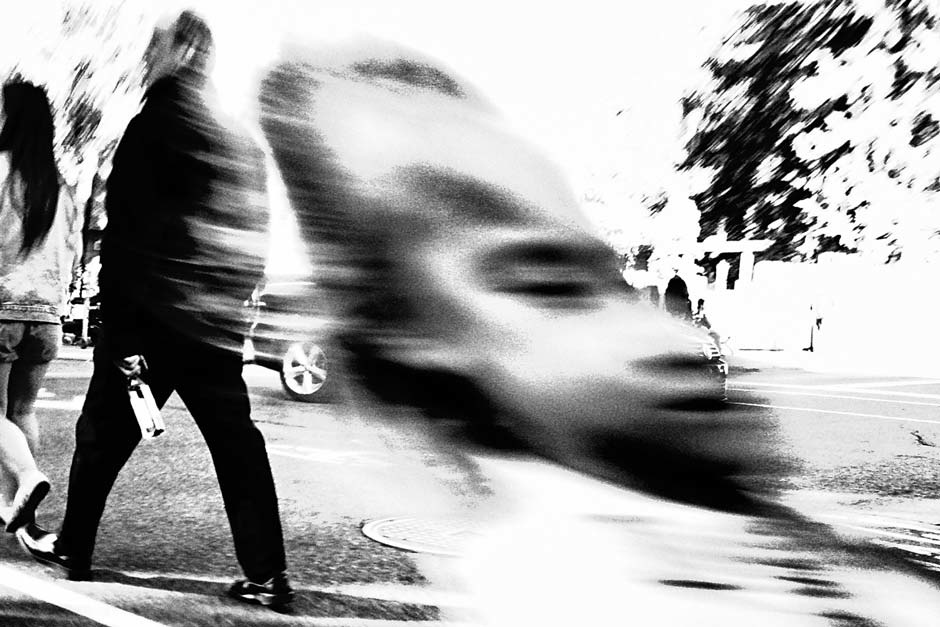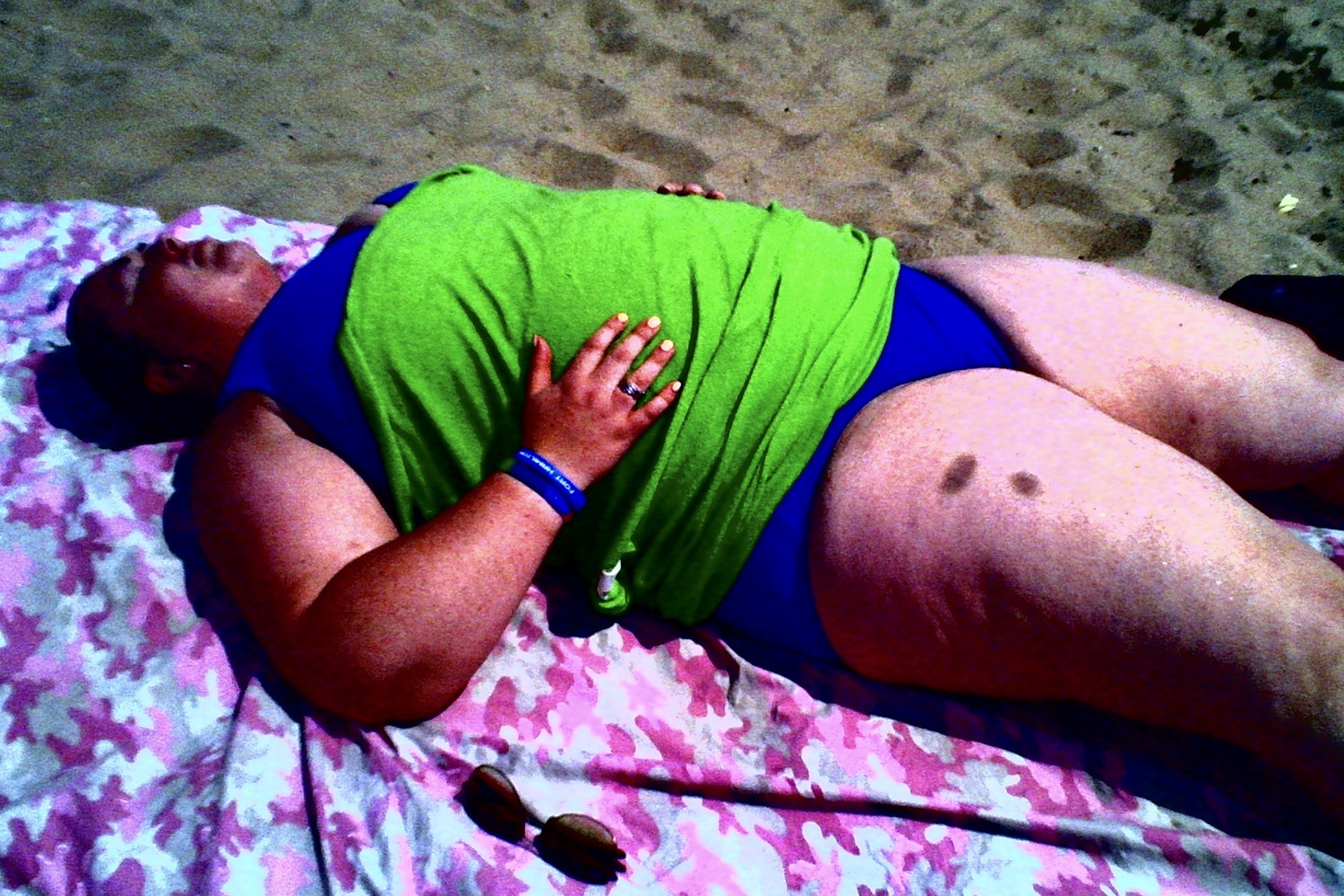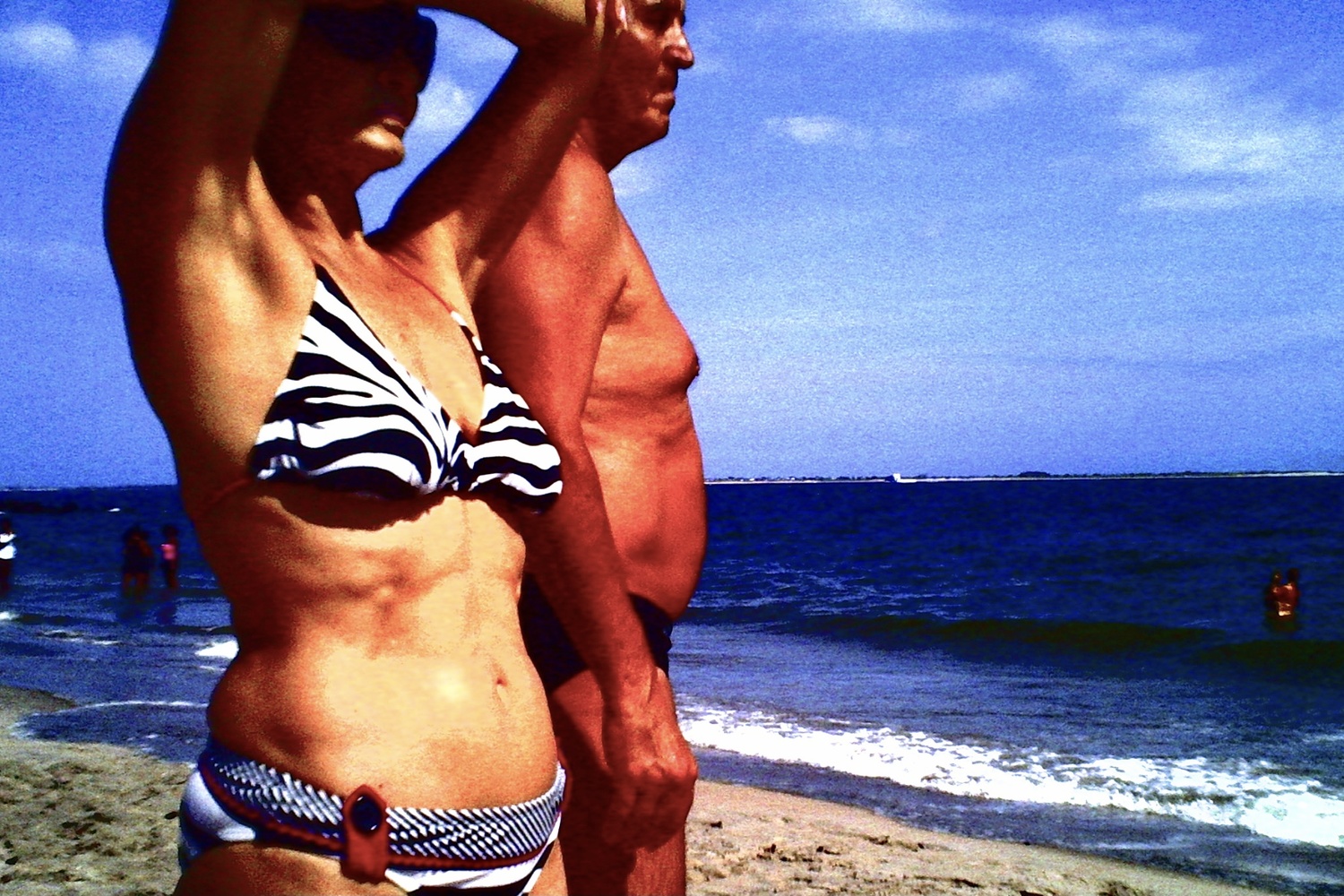The Harinezumi camera, a Japanese toy camera sold by Powershovel Superheadz, is now totally discontinued. As a highly popular cult camera, used models are now selling for more than $500 on eBay. Is it worth it?
I have been shooting with the Harinezumi for a decade now. Perhaps the best result of which is my Coney Island project and book, Michael Sweet's Coney Island. I used the Harinezumi exclusively. The bright sun of the beach was ideal, given that the camera has just a three-megapixel sensor (an upgrade from earlier models, which sported a two-megapixel sensor). In total, the camera has been released in at least four different iterations. They all look the same — like a 110 film canister. So, why all the fuss? How did this little plastic camera end up as a cult classic? There is no definitive answer. It is a story of serendipity.

Shot with Digital Harinezumi, no post manipulation. (c) Michael Ernest Sweet
The Harinezumi produces photos that are unique. This cannot be disputed. The monochrome images are grainy and can be adjusted to be very high contrast — think Moriyama, for example. The color images are saturated, sometimes comically so. Both color and black and white images are often distorted and definitely of the lo-fi variety. In fact, the images are so lo-fi that you really can't do much manipulation or cropping. What you get is what you get, and this is part of the Harinezumi's unique charm.

Shot with Digital Harinezumi, no post manipulation. (c) Michael Ernest Sweet
Initially, I think what attracted people to this camera was the idea that it could replicate, in the digital world, the look and feel of a 110 pocket camera and its resulting snapshots. In some way, this is true. Although, personally, I think the camera's images have their very own look and feel. To me, they look digital but not quite like any other digital photo. This is part of the camera's success story. A camera can often impact a photograph's look and feel. Leica people talk about this all the time. And, it's true of many cameras. The Harinezumi's "look and feel" comes across in all of the images. Once you get into working with this camera, you get hooked. You need to make more of those images, and to do so, you need this camera.

Shot with Digital Harinezumi, no post manipulation. (c) Michael Ernest Sweet
Another attraction of this now-famous little camera is its simplicity. There are few settings. You can select ISO 100 or 800, for example, but nothing in between, monochrome or color (with a few variations), and "normal" or "macro." That's about it. The lens is a fixed 4mm f/3, which would be a 38mm in 35mm format. There is no flash. Some of the variations for color or black and white mode include "fog," "overexposure," and "hard." In some ways, this camera was at the forefront of the "digital filter" moment. You didn't need to apply the filters in post-production, though; you shot with them! This is another part of the recipe for the camera's success.

Shot with Digital Harinezumi, no post manipulation. (c) Michael Ernest Sweet
Many early digital cameras (especially the cheaper ones) produced pixelated, muddy images. I recently reviewed the Contax TVS Digital, and boy, was I underwhelmed. What a mess! The photographs from these early low-megapixel cameras are not dreamy, fun, or nostalgic. They are simply bad technology on full display. The Harinezumi is somehow different. The photographs are made with the same crappy lo-fi technology but produce a different outcome visually. This is where the magic comes in. Something about the Harinezumi is a little bit magic, but you need to get your hands on one and give it a go to really understand (and believe) this point.

Shot with Digital Harinezumi, no post manipulation. (c) Michael Ernest Sweet
Despite the camera's popularity among amateur and more noted photographers alike, it was discontinued in 2016. As a result of the camera's ever-growing cult status, prices have risen steadily ever since. In 2015, you could buy one for $50; I remember doing so. Now, if you can even find a new one, expect to pay anywhere from $500 to $1,000. Yup, that's right, for a three-megapixel plastic camera! And they sell. I know one photographer who recently bought four of them to "stock up."

Shot with Digital Harinezumi, no post manipulation. (c) Michael Ernest Sweet
So, does all the fuss and hype around the Harinezumi justify the current price tag? My answer, maybe. There is no denying that this is a special camera that makes unique images. There is also something magical about holding one in your hand and "pointing" and "shooting" at everything around you. But also don't be fooled, you are still buying a tiny little piece of plastic (I think absolutely everything except the battery door hinge is plastic) for an enormous price. I guess, put another way, the Harinezumi is worth $1,000 in the same way a Contax T3 (not to be confused with the digital version mentioned earlier) is worth $2,000 — you are buying an opportunity to experience a little piece of history. You are paying to access something that in some way is over, gone. I say go for it if you have the money. Shooting with this little plastic wonder is divinely liberating and can breathe a lot of fresh air into an otherwise stale photography practice. However, in this regard, you could likely achieve the same thing with a $5 disposable camera also!
All photos used with permission.






Does anybody really need to read an article to know that the answer is no? Of course it isn't worth $500 to any normal person. It is an expensive gimmick. If you want an obtuse look there are many ways to do that in Photoshop and with control.
Thanks for your input, Ed. I appreciate you taking the time to comment. I guess the same could be said for all analog photography, too. Why spend the bucks on film and development when you can do it all in Photoshop, eh? All the best.
"Why spend the bucks on film and development when you can do it all in Photoshop, eh?"
Why? Because, with Photoshop, what you said can't be done. I've been an analog shooter for 40 years now. I'm working on photoshop since 1995. Photoshop can only give you the illusion of what you said but can't do it. Photoshop can't have film density. Grain in photoshop on a layer is so noticeable : under that layer one can really see that digital sharpness, when with analog photo, edges of objects aren't that sharp because as you may know, grain is part of the film structure. So no, photoshop can't do it all.
I agree. And, for all those same reasons, the Harinezumi cannot also be faithfully reproduced by filters or Photoshop. It can approximate, yes, but it is not the same.
"Toy" or not, I have version 1 and love it! Unpredictable and unique, and a heck of a lot of fun. I am a Pro Photographer, been using PS for 20+ years. Shot film for 20+ before that. The feeling of capturing a moment the way you want, without saying "I'll do that (whatever) later in PhotoShop" is fantastic! And of course, this camera pics look EXACTLY like a cheap 110 film camera, or an early 8mm film camera - no PS required. :-)
The toy camera was popularized by the Diana which used 120 film and a tiny plastic lens. It produced what could be considered a vernacular-looking image or the types of photographs that regular people took with really cheap cameras. Part of the language of the vernacular is zero attempt at composition, putting your subject in the center, and then cutting their head off, bad or muted color, and errors in optics that produced distorted affects.In the history photography, the way vernacular images were produced by the every day homeowner is important, and in the 1960s famous street photographers like Gary Winogrand, Lee Friedlander, and others tried to emulate and produce their own vernacular style. The point is that cameras can produce images which are more faithful to the genre of photography, as opposed to say using photography to emulate painting.
Interesting points, RT. Thanks for chiming in. Much appreciated.
Bad is bad. Glorifying it doesn't make it good. Making it expensive doesn't make it good.
So the Harinezumi is bad? Thanks for the input, Michelle!
I think it looks super fun Michael, I wish I'd jumped on the Digital Harinezumi bandwagon years ago! I do have some Superheadz cameras but they're all film: the Blackbird Fly, the Golden Half, and the Pink Dress Ultra Wide and Slim!
Yes, I'm glad I bought mine back when they were just $50! A novelty for sure, but sometimes novelties are fun!